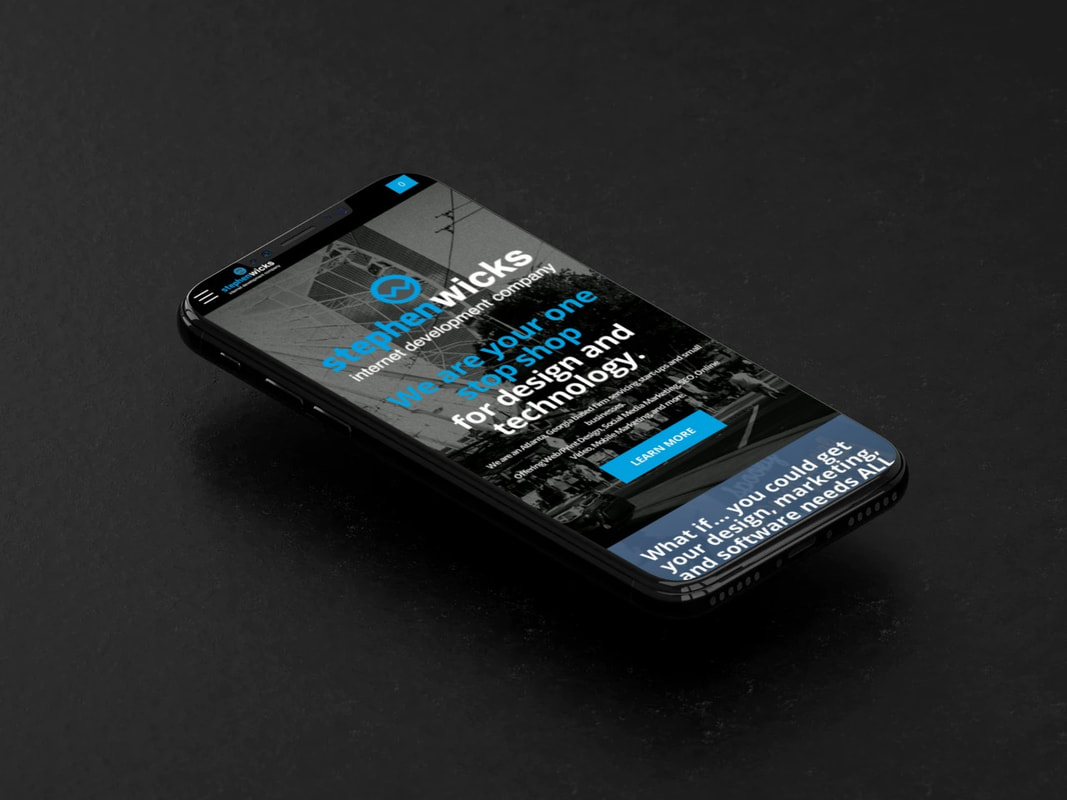|
Blog Post - Stephen Wicks
We are proud to announce that we will be putting on a coding and technology Bootcamp for kids in January 2019. The event will be held at the AEI Startup Factory in Stonecrest, Georgia. Other specific details will be released soon. It's very important that we expose our kids to the technologies of the future so that they can be competitive. If you're interested in learning more, email Stephen at [email protected]
0 Comments
Blog Post - Stephen Wicks Okay. So I know that many of you believe that having an android or ios app available for download is "cool." Many of you think that it would raise the profile of your business if you had a way to communicate with your customers via their cell phones. It would be nice if they could just click on the icon located on their phone's screen and get directly to your app. If you're one of those people, I have some shocking news for you. There is practically no reason for any of you to ever have to create a native app for your business. It's the end of 2018 and as you know things change rapidly in the tech world. There used to be just two options: build a mobile website, or build an app. Both of those had it's pros and cons. It really depended on the needs of your business. Native apps offered the best experience and offline interactivity, but due to development costs and terrible engagement rates (especially for small business apps), they weren’t always worth the investment. Apps were also subjected to the rules, regulations, and whims of fickle, temperamental app stores. The mobile internet needed a breakthrough, and in 2015, it arrived with the birth of Progressive Web Apps (PWAs). Progressive Web Apps are already making their mark as the fastest, easiest, and best way to have a winning mobile experience. And they’re on track to become not just an option, but the top option for mobile internet engagement.
PWAs can best be described as websites that behave like apps. If you imagine that an app and a website had a lovechild that inherited its parents’ best characteristics (and none of the worst), that would be exactly what a PWA is. From one parent (the website), the PWA inherits its easy discoverability (without having to be downloaded) and low maintenance upkeep; and from the other parent (the app), the PWA inherits its rich functionality, offline user interactivity, and engaging experience. Like a website, a PWA is accessed directly from your web browser; and like an app, it can be installed on your mobile device’s home screen and send you notifications. Though PWAs have been around for a few years, they’re really starting to hit their stride now, so there’s no better time than now to take advantage of this new technology. Our company has already used this technology to develop PWAs and they work very well. They're fast. Icons can be downloaded to the cell phone home screen just like a native app, they can be created in less time and for less money. It's a win/win for businesses and the development team. Have you ever heard of PWAs? Leave a comment and let me know. Stephen Wicks Lead Designer / CEO Stephen Wicks Internet Development Company [email protected] Blog Post - Stephen Wicks
According to the company's Wikipedia entry, at the height of it's popularity in 2004, Blockbuster Video employed 84,300 people worldwide, including about 58,500 in the United States and about 25,800 in other countries, and had 9,094 stores in total, with more than 4,500 of these in the US. They were a giant in the home video rental industry. Fast forward to today in 2018, they now only have one retail store in the United States. That's right... only one. How could BlockBuster Video's huge fall from grace have happened in only 14 short years? How can a company this large, with this many resources have fallen in such a huge and epic way? Well, I think I know the basic answer. The one that should be painfully obvious to most true entrepreneurs. Yes, I'm sure there are complexities to the answer that we won't get into here, but it really boils down to one major issue. The company was made obsolete by a few new players in the home video market. The two most notable thorns in BlockBuster Video's side were 1.) Netflix and 2.) Redbox. These two companies had business models where their customers did not have to go into a physical retail store in order to watch and consume home videos. Netflix gave the consumer the opportunity to easily go online and order videos to be delivered to their home by US mail on DVD or they could stream the rented movies through the internet. In the case of Redbox, the company employed a fleet of rental kiosks at local grocery stores, pharmacies, and other convenient retail locations. These two companies totally got rid of the need to physically go into a retail store and browse the selection of movies. The consumers loved these new business models. The consumers clearly wanted more convenience and more options when renting movies. The tragic flaw of the leaders in BlockBuster Video was that they did not constantly keep their eyes open for what would come in the future. They did not adequately analyze the competition from the two new players in their industry. They also didn't keep up with the wants, needs and desires of their customers. As business owners, you MUST and I repeat... MUST stay on the lookout for changes in your industry. You MUST know what your customers want and expect. No matter how large you are as a company, you CAN fail. You cannot afford to get "caught slippin" when it comes to satisfying the needs of your customers and staying on top of industry trends. If you don't ,you just may find yourself in the same shoes as BlockBuster Video... a Wikipedia entry of what used to be. Stephen Wicks Lead Designer / CEO Stephen Wicks Internet Development Company [email protected] Blog Post - Stephen Wicks
So, I was perusing the internet this morning and saw a news story about how a Waffle House restaurant in Travelers Rest, SC. closed down due to snowy conditions. Some of you may not know why that's significant while others may know exactly why that's important. It turns out that there is such a thing called the "Waffle House Index." The federal emergency management authorities determine how bad a storm is based on if a Waffle House location will be opened or closed. Waffle House, which has over 1500 locations across the Southeastern United States, is so consistent with being opened 24 hours a day / 365 days per year that the feds actually use their closings in their assessments. Wow! How incredible is that!??? Waffle House has built such a reputation as being "always open" that people have come to think of them when you ask "Where's a place open that we can go to?" It doesn't matter what time of day it is or if it's a holiday or not... they will be open. That level of consistency should be a business goal that we all share as entrepreneurs. Waffle House has a loyal customer base because they have a non written contract with their customers. Not only are they a restaurant, but they have become a consistent and steadfast institution in the communities that they serve. It's my goal to develop that level of trust with my customers here at Stephen Wicks Internet Development Company. We have not always been that or even had that aspiration as a focus, but we do now. Our company wants to have a similar "unwritten contract" with our customers. We want them to know that we will always be committed to being consistent with a high level of customer service, professionalism, and skill. I've learned a lot from the "Waffle House Index." Do you also think that what Waffle House has accompished is a great example for us all? Let me know in the comments. As the great John Noird, would say.. "Go be great!" Stephen Wicks Lead Designer / CEO Stephen Wicks Internet Development Company [email protected] |
Categories
All
Blog WriterArchives
July 2024
|
|
Stephen Wicks Internet Development Company
1075 Peachtree St NE Ste 6 #570204 Atlanta, GA 30357 Support: [email protected] Office: (678) 813-6200 |







 RSS Feed
RSS Feed
